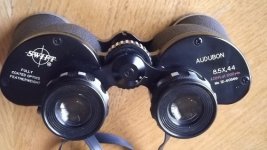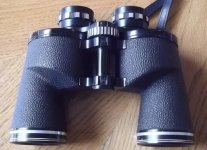Nixterdemus
Well-known member
Thank you for the response Renze. Yes, red & green in the ocular & green in the objective.
ETA: In the Swift 804 ID thread Brock posted his & mine looks the same w/exception that I have no oval sticker on the left side bridge, the Swift small round one is on the right side, but instead on the bottom of the left barrel I have a larger round applique, japan telescopes inspection institute. In the center, INSPECTED.
Same blue strap w/swift in white though I didn't notice the one piece rainguard w/one lug on the left, lining up nicely w/L. body strap lug, that came w/mine. Mine came a la carte w/o hard case.
ETA: In the Swift 804 ID thread Brock posted his & mine looks the same w/exception that I have no oval sticker on the left side bridge, the Swift small round one is on the right side, but instead on the bottom of the left barrel I have a larger round applique, japan telescopes inspection institute. In the center, INSPECTED.
Same blue strap w/swift in white though I didn't notice the one piece rainguard w/one lug on the left, lining up nicely w/L. body strap lug, that came w/mine. Mine came a la carte w/o hard case.
Last edited:






